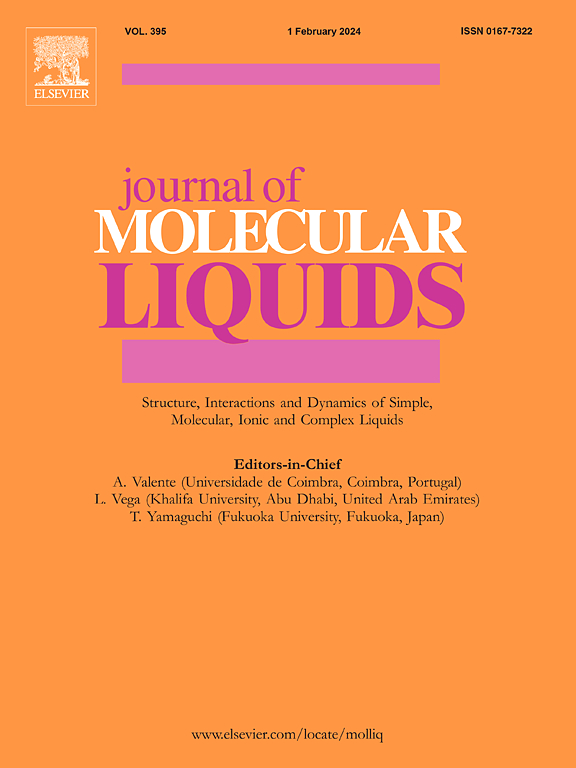Polyacrylic acid-based Low Transition Temperature Mixtures (LTTMs) for the exhaustive depolymerization of polyethylene terephthalate (PET)
IF 5.3
2区 化学
Q2 CHEMISTRY, PHYSICAL
引用次数: 0
Abstract
The preparation and characterization of new solvents have garnered significant research interest in recent years, driven by the urgent need for biodegradable, sustainable, and high-performance solvents. Deep eutectic solvents (DESs) and low transition temperature mixtures (LTTMs) have emerged as promising strategies to meet these goals. For instance, recent studies have shown that iron-based DESs containing both Lewis and Brønsted acids can depolymerize polyethylene terephthalate (PET) under mild conditions. To the best of our knowledge, we report, here, for the first time, the preparation and characterization of a LTTM containing a high molecular weight Brønsted acid, namely polyacrylic acid (PAA), and FeCl3·6H2O as the Lewis acid. Although some limitations posed by the liquid features (water-sensitivity and corrosivity), detailed characterization was successfully conducted. Moreover, the mixture was proved to be active in the hydrolysis of PET, both in its pure form and when diluted with aqueous HCl, thus representing the first example where a polyacid-based LTTM is used for the effective depolymerization of PET.

求助全文
约1分钟内获得全文
求助全文
来源期刊

Journal of Molecular Liquids
化学-物理:原子、分子和化学物理
CiteScore
10.30
自引率
16.70%
发文量
2597
审稿时长
78 days
期刊介绍:
The journal includes papers in the following areas:
– Simple organic liquids and mixtures
– Ionic liquids
– Surfactant solutions (including micelles and vesicles) and liquid interfaces
– Colloidal solutions and nanoparticles
– Thermotropic and lyotropic liquid crystals
– Ferrofluids
– Water, aqueous solutions and other hydrogen-bonded liquids
– Lubricants, polymer solutions and melts
– Molten metals and salts
– Phase transitions and critical phenomena in liquids and confined fluids
– Self assembly in complex liquids.– Biomolecules in solution
The emphasis is on the molecular (or microscopic) understanding of particular liquids or liquid systems, especially concerning structure, dynamics and intermolecular forces. The experimental techniques used may include:
– Conventional spectroscopy (mid-IR and far-IR, Raman, NMR, etc.)
– Non-linear optics and time resolved spectroscopy (psec, fsec, asec, ISRS, etc.)
– Light scattering (Rayleigh, Brillouin, PCS, etc.)
– Dielectric relaxation
– X-ray and neutron scattering and diffraction.
Experimental studies, computer simulations (MD or MC) and analytical theory will be considered for publication; papers just reporting experimental results that do not contribute to the understanding of the fundamentals of molecular and ionic liquids will not be accepted. Only papers of a non-routine nature and advancing the field will be considered for publication.
 求助内容:
求助内容: 应助结果提醒方式:
应助结果提醒方式:


